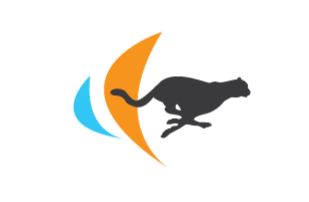What are healthy foods?
What’s good for me to eat?
What’s bad for me?
I find that in today’s world, there’s a lot of confusion around food. People often times want to eat healthy, but they don’t know how. One week it feels like they read an article that tells them to follow one approach and the next week they hear from a friend that a different approach is the way to go. Amidst all this confusion, I challenge people to ask, “Why?”
Why is this new great approach better for me? Why is this food considered healthy? Why is this food unhealthy?
I believe you can answer those basic questions with just a little basic knowledge on food. Namely, calories and macronutrients. Before we go any further, I will add this disclaimer: I am not a nutritionist. I am not a food scientist. I have taken the initiative to educate myself on food and specifically how food relates to athletes and athletic training.
So, let’s start with calories. Calories are energy. Energy is fuel. For an athlete, you can look at a given workout and determine how many calories you burn per hour. You can also count the number of calories you eat in your food. At the most basic level, if you eat more calories than you burn, you gain weight. On the flip side, if you burn more calories than you eat, you lose weight. Don’t forget to factor in your basal metabolic rate (that’s the number of calories you burn throughout the day just being you). Sounds simple right? Yes and no. It’s actually really hard to accurately count calories – both burned and consumed. Plus, it is true that not all calories are created equal.
That brings us to macronutrients. There are three macronutrients: fat, carbohydrate, and protein. Fat and carbohydrate are sources of energy meaning that they can be used for fuel during exercise. Protein is used to build muscle. The differences between fat and carbs are that carbs are meant to be an immediate source of fuel and are also used in higher proportions during higher intensity, shorter term (under 5 minutes) exercise. Fat on the other had can take up to 12 hrs. to metabolize – eat an avocado now and you’ll be able to burn it for energy during your jog tomorrow morning. Fat is also used in higher proportion is longer duration (over 5 minutes) exercise and lower intensity. Finally, carbs can be converted to fat and stored for use later. Protein on the other hand cannot be converted and stored as fat.
Let’s see how much of this you got and think some of these questions through.
Why is it good to eat a little protein before bed?
Remember, protein is used to build muscle. While you’re sleeping, your body is at rest and it takes that opportunity to rebuild your muscles. Giving your body some protein right before sleep is a great way to kick start that process. Immediately after a workout is also a great time to get a little protein.
Why is it bad to eat fat during exercise?
Fat is used in higher proportions in longer duration, lower intensity exercise. That might – mistakenly – lead you to believe that you should eat fat during your 45 min morning jog. Remember though that it takes a long time to metabolize fat, so you don’t want to consume it during exercise. Instead, focus on consuming a small amount of carbs during exercise. This small amount of carbs actually enables your body to burn the fat that it already has stored for the majority of the energy that your workout requires.
Why are carbs bad? Are they really bad?
No! Carbs are not bad for you. Hopefully you caught the part about carbs being used as fuel for athletes. As an endurance athlete, you need to eat carbs. Please, please, please do not go on a low-carb or no-carb diet as an endurance athlete. Yes, it is true that you burn a higher portion of fat during long distance exercise, but it is not entirely fat – it’s still a mix of fat and carbs.
Low-carb and no-carb diets are a hit in the US right now, because the general population eats more carbs than they need and doesn’t exercise much or at all. For a person with a relatively sedentary lifestyle, you really don’t need many carbs because you’re not doing exercise to burn that fuel. When it’s not burned, it’s stored on the body as fat. Think of it like filling up the gas tank in your car. If you go to the gas station every day and buy 10 gallons of gas, but then don’t drive anywhere, your gas tank is going to overflow every time you fill up.
I hope this was helpful to give you a basic introduction to food and how it relates to athletes. I’m going to publish more in the coming months on more specifics of nutrition and how it relates to athletic training including putting together a race day hydration and nutrition plan and more.
